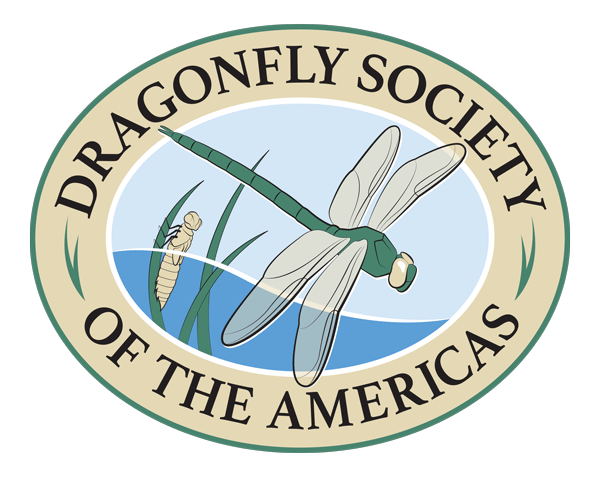April Species of the Month: Swift Forktail (Ischnura erratica)
Swift Forktail (Ischnura erratica) male, Clatsop Co., Oregon, USA, 18 Jun 2018. (Copyright Jim Johnson)
April’s Species of the Month is the Swift Forktail, Ischnura erratica, in the narrow-winged damselfly family Coenagrionidae. They are one of the largest forktails at about 33 mm (approximately 1.3 inches) in length. This damselfly is found in bogs, ponds, and areas of open, clear water in the Pacific Northwest (British Columbia, Washington State, Oregon, and Northwest California). Read on to discover dragonfly chaser Jim Johnson’s anticipation of this early season species.
Watching for Odes
The anticipation for spring and the first odonates of the year is high as I write this from my home in Vancouver, Washington. The tension is like watching a balloon inflate beyond its intended limits: you know it’s going to burst at any moment, but you don’t know exactly when. A favorite early spring odonate that I look forward to seeing when the “balloon pops'' is the striking Swift Forktail (Ischnura erratica)—one of the few odonates that could be described as a uniquely Pacific Northwest species.
Swift Forktail (Ischnura erratica), immature female, Clatsop Co., Oregon, USA, 22 May 2015. (Copyright Jim Johnson)
Though not a rare species along the west coast of North America (southern British Columbia to central California), the Swift Forktail is encountered less frequently than its more abundant and ubiquitous western congeners (Pacific Forktail, Ischnura cervula, and Western Forktail, I. perparva). I suppose these fewer encounters contribute to its appeal—absence does make the heart grow fonder. The Swift Forktail also has a shorter flight season than the other species with few sightings beyond early August.
Swift Forktail Habitat
In my experience the Swift Forktail prefers wetlands containing a mixed mosaic of dense emergent vegetation and open, clear water. Some ideal locations are sedge wetlands, beaver ponds, bog ponds, and well-vegetated, slow-flowing ditches. They are also commonly encountered along sun-dappled paths and roads in forested locations where they feed on mosquitoes and other small flying insects while, presumably, taking a break from the bustle of pond life. I mostly associate this species with coastal Oregon and Washington, but they also occur up to the mountain passes of the Cascades Range (and only sporadically further east).
Swift Forktail (Ischnura erratica), gynochromatic (“female colored”) female, Tillamook Co., Oregon, USA, 3 Jul 2016. (Copyright Jim Johnson)
Putting the “Fork” in “Forktail”
The Swift Forktail is a relatively large, robust species of Ischnura with a boldly striped black-and-blue thorax and (usually) an extra long blue patch near the tip of an otherwise mostly black abdomen. They are quite the dapper damsels, but I think the most striking features of the male are located at his rear end. The paraprocts are long and spiky, extending almost straight toward the rear like daggers. The notched dorsal process on the last abdominal segment (the thing that puts the “fork” in “forktail”) is very prominent, rising well above the segment. Because of these structures at the end of the abdomen, males possess a unique profile which renders them easily recognizable even if you ignore their coloration.
Swift Forktail (Ischnura erratica), androchromatic (“male colored”) female, Marion Co., Oregon, USA, 6 Jun 2014. (Copyright Jim Johnson)
Female Swift Forktails
Like many species in the genus, female Swift Forktails are polychromatic. Some are colored conspicuously much like males (androchromatic or homeochromatic); others dull green and less clearly patterned (gynochromatic or heterochromatic). Immatures of the latter females are striking in their own right for a short time with bold orange eye spots and thoracic striping. The orange markings quickly transition to dull yellowish-green as they mature, so I always enjoy observing these blazing beauties when I get the opportunity.
I will now return to monitoring the long-range weather forecast to see when that “balloon” might pop and I can again observe one of my favorite Pacific Northwest odonates.
Our April Species of the Month blogger is Jim Johnson (gomphusjim@gmail.com). Jim has been chasing odonates since 1995—mostly in the Pacific Northwest, but also elsewhere whenever the travel bug bites. He enjoys photography and outreach through writing and speaking. Jim has served on the DSA executive council as a regular member, president, and (currently) secretary, and he has been a member of the ARGIA/BAO editorial team since 2005. Accusers claim that Jim is obsessed with Odonata, and he agrees.





